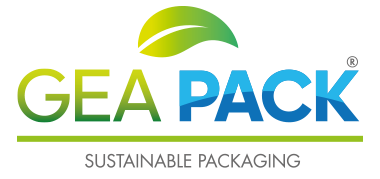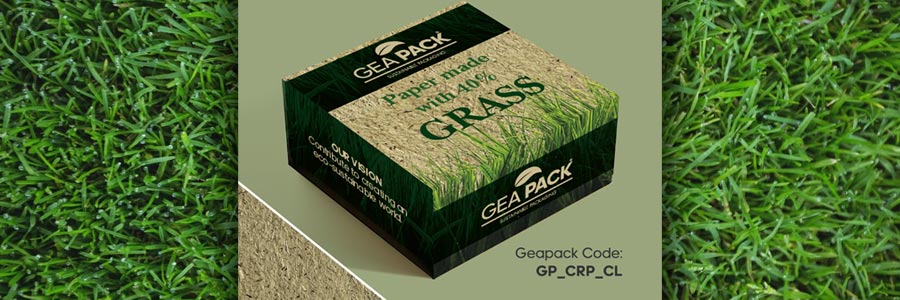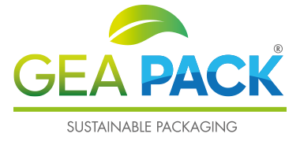In an era where environmental sustainability is increasingly important to consumers and a key differentiator for industries, the packaging sector must offer innovative, sustainable, and eco-friendly solutions. Among these, packaging made from grass paper represents a particularly promising frontier, combining environmental responsibility, technical performance, and strong communication potential.
Grass as a Raw Material for Sustainable Packaging: An Abundant and Renewable Resource
Traditional paper production involves intensive use of forest resources, leading to deforestation and significant environmental impacts. Grass paper, which uses up to 50% grass fiber mixed with virgin or recycled cellulose, offers an excellent solution for sustainable packaging.
Grass, mainly sourced from unused meadows or marginal lands, is an abundant, renewable, and fast-growing resource. Unlike trees, which take decades to mature, grass can be harvested multiple times a year, ensuring a continuous supply of raw material with a significantly lower ecological footprint.
The Grass Paper Production Process: Technology and Innovation for Sustainable Packaging
The production of grass paper is a virtuous example of technological innovation serving the environment. It begins with the harvesting of grass, which is then dried and processed into pellets. This concentrated form preserves the fibers’ properties and facilitates transport and storage.
Next, the pellets are turned into a fibrous pulp using mechanical processes, avoiding the use of harsh chemicals typically found in traditional paper production. This pulp is then blended with virgin or recycled cellulose in varying proportions depending on the desired final product characteristics.
A particularly innovative aspect of the process is the low resource consumption. Producing one kilogram of traditional pulp requires about 6,000 liters of water and large amounts of energy, whereas grass paper pulp uses only a fraction of that, resulting in significant environmental and economic benefits.
Technical Characteristics of Grass Paper:
- Natural color: slightly greenish hue that gives a distinctive appearance
- Mechanical strength: structural properties comparable to traditional paper
- Adaptability: available in various weights and finishes
- Printability: excellent ink absorption and compatibility with standard printing techniques
- Biodegradability: fully decomposes in natural environments
- Compostability: generally compostable
- Suitable for direct contact: typically safe for primary food and cosmetic packaging
Environmental Benefits of Grass Paper:
- Sustainability: grass is a fast-growing, renewable resource
- Biodegradability: decomposes naturally without releasing toxic substances
- Reduced water usage: up to 95% less water needed compared to traditional paper
- Lower energy consumption: requires about 70% less energy
- Lower CO₂ emissions: significantly smaller carbon footprint
- Forest preservation: reduced pressure on forest resources
- Use of marginal land: suitable for lands not viable for traditional agriculture
Marketing and Communication Benefits:
- Enhanced brand image: tangible proof of environmental commitment, aligned with brand values, and ideal for effective storytelling
- Consumer appeal: meets growing sustainability expectations. A recent market study found that 76% of consumers are more likely to buy products with sustainable packaging, and 52% are willing to pay a premium for eco-friendly solutions
- Competitive differentiation: innovative and sustainable grass paper packaging helps brands stand out and attract consumer attention, creating a competitive edge
- Effective communication: packaging becomes a powerful tool to convey the company’s sustainability values and educate consumers on the environmental benefits of their choices. Labels and messages can highlight the natural origin and biodegradability of the materials
- Alignment with SDGs (Sustainable Development Goals) of the 2030 Agenda
What It Communicates to Consumers
Key messages that grass paper packaging conveys to consumers include:
- Environmental sustainability: seen as an eco-friendly alternative to traditional paper, grass paper reduces the use of trees and water, while requiring less energy to produce—clearly showing a concrete commitment to sustainability
- Natural feel: using grass evokes a connection to nature and a return to simpler, biodegradable, and compostable materials. The packaging fits into a “green” life cycle from production to disposal
- Plant-based origin: visually and tactilely, grass paper conveys naturalness and simplicity, reinforcing the perception of a genuine, plant-based product inside
Industries Suitable for Grass Paper
Grass paper is highly versatile and suitable for both primary and secondary packaging, such as boxes, sleeves, displays, and more. It is especially ideal for companies operating in the following sectors:
- Natural and organic cosmetics: natural ingredients and organic claims are increasingly important in cosmetics. Grass paper packaging directly reflects the product’s natural identity
- Herbal, phytotherapeutic, and natural pharmaceutical products: grass paper creates a strong association with plant-based products, enhancing their natural value
- Organic and natural food: organic, vegan, local, and artisanal food products benefit greatly from packaging that aligns with values of simplicity and environmental respect. Grass paper visually and symbolically strengthens the perception of a genuine and wholesome product
Conclusion: Grass Paper for Sustainable Packaging as a Strategic Choice
In a context of growing environmental awareness and increasingly strict regulatory standards, investing in innovative grass paper packaging today means actively contributing to ecosystem protection while strategically positioning your brand in a market that increasingly rewards sustainable choices. It sends a clear message to consumers: the product has a natural and plant-based origin.
🔗 Choose grass paper for your packaging and join the change towards sustainability! 🌿
For more information Contact us or Visit www.geapack.eu



